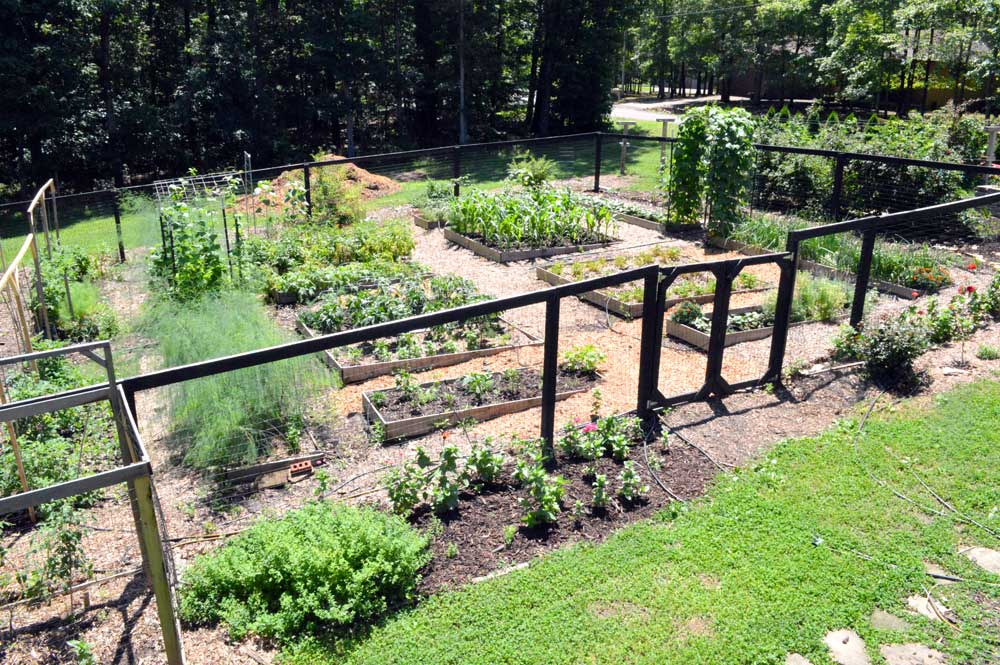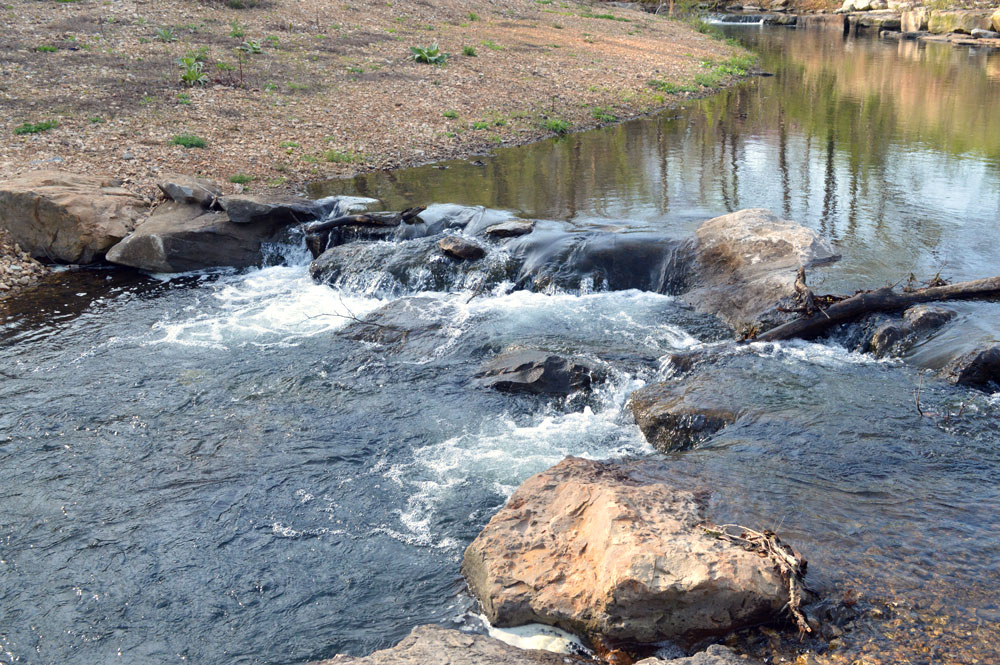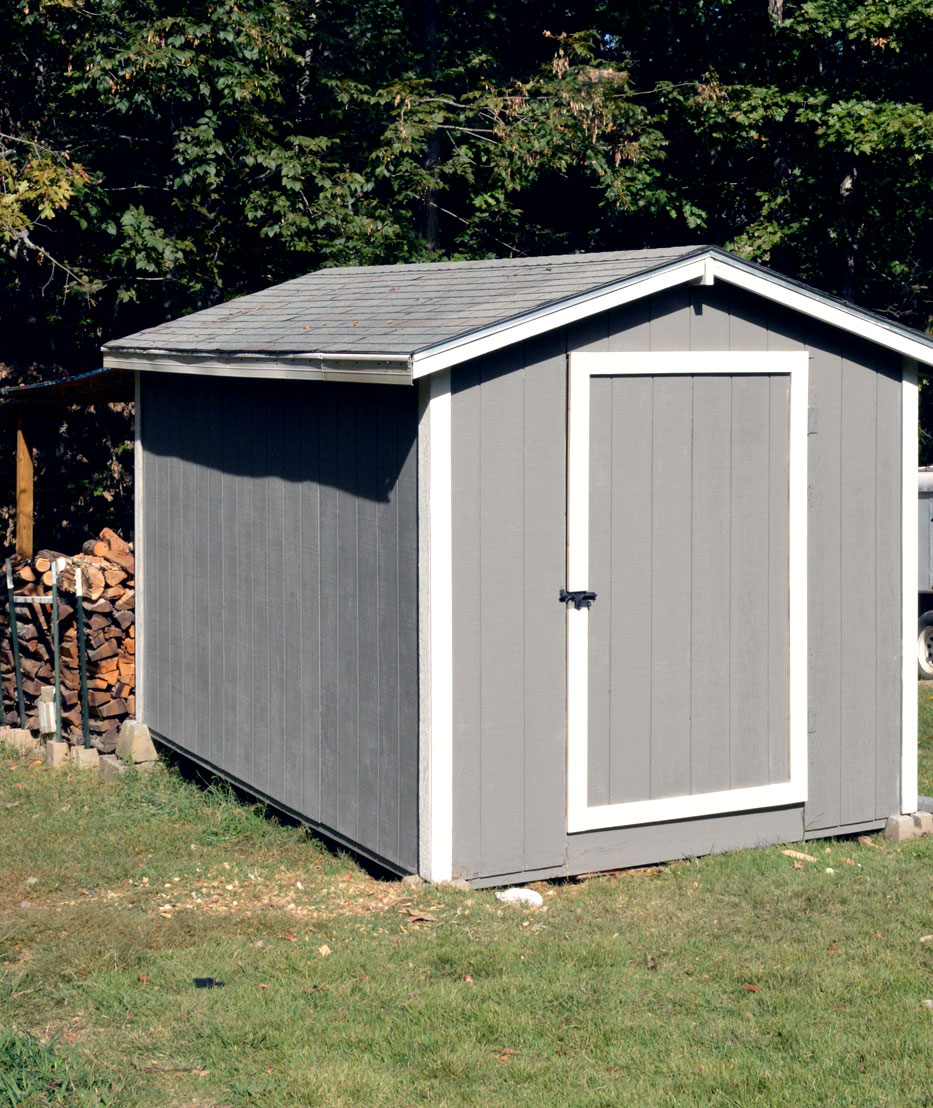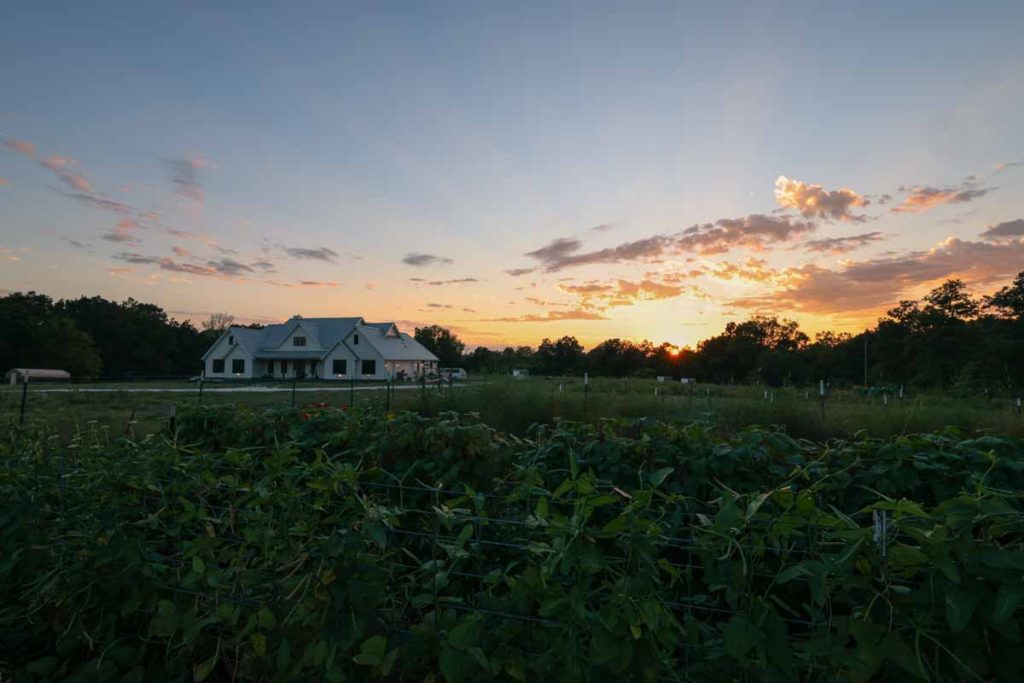Where is the best place for a vegetable garden? Location of where you place a garden can make or break your success when growing food!
There is definitely no one size fits all solution that will tell you the best place for a vegetable garden, but rather key factors that will help determine where a great spot is for growing.

Your first considerations should be:
- Full sun
- Water access
- Drainage
- Soil Quality
- Proximity to your Home and Tool Shed
#1 Full Sun
In most locations you want a full 8-12+ hours of sun, the exception being of course desert or extreme heat places where too much sun could be detrimental.
Full sun is needed because the majority of vegetables need to absorb as much energy from the sun as possible. As the vegetables absorb the sun’s energy, it helps to fuel all the processes they need to survive and thrive! This process is called photosynthesis.

Here is a list of vegetables that thrive in full sun:
- Tomatoes
- Corn
- Peppers
- Cucumbers
- Melons
- Summer Squash
- Winter Squash
- Pumpkins
- Potatoes
- Sweet Potatoes
- Onions
- Garlic
Without enough sun, the vegetables aren’t able to meet their requirements for photosynthesis. It leads to plants that are prone to disease and problems, and low yields.
I put full sun as #1 on this list because it is the first priority and is the most important to implement. All other location considerations are of lesser importance to garden success.
What if I don’t have a garden spot with enough sun?
If your entire property has no locations with enough sun, there are some options. First, you can still grow some types of vegetables in shade. Leafy greens can successfully be grown in part shade, meaning anything with four hours of sun and above.

Here are some great crops for part shade:
- Kale
- Lettuce
- Mustard greens
- Herbs
- Arugula
- Bok Choy
- Brussel Sprouts
- Kale
- Beets
- Kohlrabi
- Parsnip
- Turnips
- Radishes
- Spinach
- Chard
Other options for a property with not enough sun include clearing trees or finding a community garden plot that has more sun.
Learning from Experience the Best Place to Grow Vegetables
On a previous property of ours, we dealt with this struggle of not getting much sun. We removed all the trees on our property but the surrounding trees made it so we still only were able to get about 7-8 hours of sun.
I grew both types of crops, part shade and full sun, and my plants that needed full sun always struggled a bit even though they got almost 8 hours a day.
 2019 Garden
2019 Garden
Fast forward a few years, and we bought a property with plenty of full sun areas for the garden. Now I get at least 12 hours a day in summer and it has made such a huge difference in the health of the plants, especially since we live in a very humid, wet climate which is disease and bug prone.
The importance of the sun is often underestimated. If you want to take one step in the right direction and make your life easier, find a spot with full sun, even if that means it’s in your front yard!

2022 Garden
#2 Water Access
A very important need for any garden is the ability to get supplemental water. Whether it be through pumping out water from a pond, municipal water, water catchment, a well, or other sources, access to water is very likely to be important. The only exception would be if you plan on dry farming, not using anything but the rain for irrigation.
When considering the best place for a vegetable garden, it would be in full sun and near your water source.
For many home gardeners, this may just mean that you need to make sure the garden is close to the water spigot on the exterior of your home, or an irrigation spigot.
I would recommend getting your water set up as you set up your garden. Speaking from experience it is frustrating to put in water after the fact and it will save you a lot of time to do it in the set up phase of the garden.

#3 Drainage
Drainage is important because the roots of most plants don’t like to be in standing water. Plant roots need air to thrive. If there is water in the soil it makes it an anaerobic environment with no oxygen and consequently, the plant would get choked out and die from the lack of air. Poor drainage also increases the likelihood of soil diseases infecting the plants.
I love the advice of Jean Martin Fortier, author of The Market Gardener. He said, “Contrary to what one might imagine, the perfect site for a … garden would not be on flat land, but rather on a gentle and steady south- facing slope with no depressions”
If you would like to see my own example of how poor drainage can affect plants negatively, just check out my video below.
Perfectly flat land doesn’t allow for the best drainage but a gentle slope of around 5% is ideal. I have a slight slope in my current garden, though not quite 5%.
There are a few ways to correct poorly draining soil if it is an issue on your property. Obviously the easiest solution is to place garden to better spot initially. But that doesn’t always work. In my own garden, it’s not an option to move the garden since all the land near our home doesn’t drain well.
Possible solutions for poor draining soil are mounded rows, raised garden beds with a more permanent enclosure like wood, simple ditches, a french drain, changing the grading of the soil, and drain tiles.
I once went you-pick strawberry picking in a field that had water three to six inches deep in most of the walkways after a morning rain. The farmer had utilized mounded garden rows about 18 inches high, making it so the strawberry roots were not sitting in water. Only our feet had to sit in the water as we picked. 🙂
#4 Soil Quality
I debated on putting soil quality on the list because in many cases good soil can be built up at any location. However, because soil quality is so important to a successful garden, it may be worthwhile to find a place with good soil initially and save the time it would take building it up.
Here are some guidelines:
- Don’t put the garden any place of your yard or land that has used herbicides in the past 3 years.
- Keep the garden away from any area with chemicals or toxins that may be lingering in the soil.
- Strive for loamy soil. Loam contains about the same proportions of sand, clay, and silt. It has good water and nutrient retention while also being fluffy and easy to work with. It also allows for good drainage and aeration in the soil. To test if your soil is loam pick up some soil and see if it forms a ball. If it forms a ball that breaks apart easily that is loam.

If you don’t have naturally loam soil, other types of soil like clay and sand can be improved by adding lost of organic matter, like compost, cover crops, and green manure.
I would highly recommend getting a soil test before beginning a garden. It will save yourself a lot of time and money in the long run. I have information about a professional soil test that I love HERE.
#5 Proximity to your home and tool shed.

An important consideration on where to put the garden is proximity to your home and the tool shed. While it may seem unnecessary to put the garden close to your home, it can be very useful.
Having the garden close to your home makes it more visible and and easier to access. When you see it all the time, it’s much easier to visit and tend to the garden. The more present you are in the garden the more successful it will be.

Time is also saved having the garden near your home. Keeping the garden a hundred feet closer to the house and tool shed can save hours of walking time over the course of a season. Keep in mind you’ll also be hauling all the produce back to the house too.
All that said, proximity of the garden to the home is #5 on the list. I would put priority on making sure there is enough sun, the water is accessible, good drainage, and quality soil. If you can get all those things close to your home that is an added bonus!!
Our current property (image above) our house is 150 feet from the garden. It was the best we could do considering where our septic system is in the backyard, and our well being on the side yard. Our garden is more in the “front yard” although we have a big property so it doesn’t feel that way.
We are able to see the garden every time we come home and it’s very prevalent and visible.

